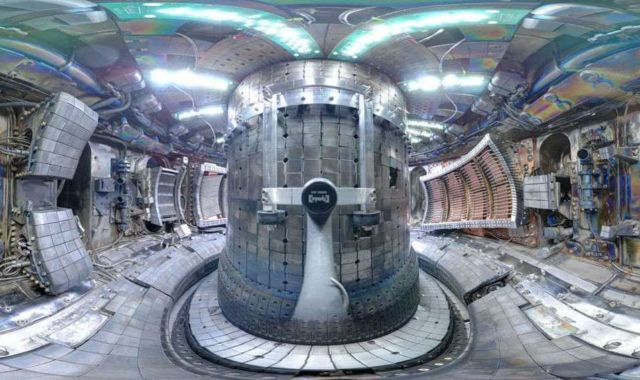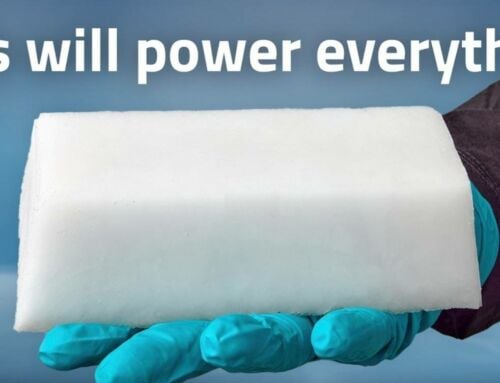Helium, a byproduct of the Fusion process, form into bubbles and weakens the materials comprising the reactor.
Working with a team of researchers at Los Alamos National Laboratory in New Mexico, Demkowicz investigated how helium behaves in nanocomposite solids, materials made of stacks of thick metal layers.
Above, interior of Alcator C-Mod viewed from A-Port looking toward the center column. Credit wikimedia
They find that inside of nanocomposite solids, instead of the metal of regular fusion reactors, the helium rather than making bubbles, forming long channels, resembling veins in living tissues.
Their findings, recently published in Science Advances.
Demkowicz said:
“We were blown away by what we saw. As you put more and more helium inside these nanocomposites, rather than destroying the material, the veins actually start to interconnect, resulting in kind of a vascular system.
Applications to fusion reactors are just the tip of the iceberg. I think the bigger picture here is in vascularized solids, ones that are kind of like tissues with vascular networks. What else could be transported through such networks? Perhaps heat or electricity or even chemicals that could help the material self-heal.”
via Futurism
source Texas A&M University






Leave A Comment